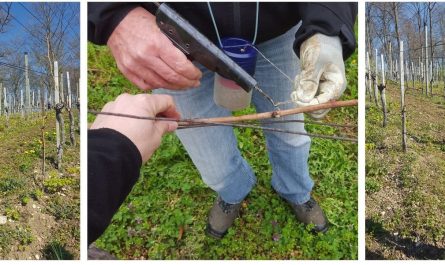As much as I enjoy travelling, there is also a downside that comes with it – and that’s the negative environmental impacts.
These days, it’s hard to open the news without seeing a headline about the global warming. Unfortunately, one of the largest contributors to CO2 emissions is transportation. Because of this, I have read about many travel bloggers receiving criticism about their amount of travelling lately, which made me also wanting to address this topic.
Although I’m aware of the impacts my travelling has, quite frankly, I’m not ready to give up on it. However, I do pay attention to my choices on how I can minimize the effect on the environment. I have gathered a list of things that I consider on my travels and by doing this I at least feel a bit less guilty. Here are a few tips that – if everyone would follow them – could mitigate the environmental impacts significantly.
1. If you fly, pack light
The weight of the plane is directly correlated to the CO2 emissions of the flight. Therefore, every kilo counts. For short trips of 3-4 days I only take a carry-on bag with me (it’s also cheaper than booking a checked-in luggage) and for longer trips, I try to keep the things to only the necessary.
2. For short-distance trips, use train or bus if possible
Instead of flying, how about taking a train or bus to your destination? Especially in Central Europe, the train and bus connections between countries and cities are pretty good and can sometimes even be quicker when you count all the transfer time to and from the airports. All these means of transportation are also more inexpensive alternatives to flying. If I’m going somewhere within a 400 km radius, I always check the train and bus connections first before heading to the flight booking site. I wrote about travelling by bus and train in my previous post, you can check it out here.
3. When you arrive to your destination, use public transportation or even better, walk
After travelling for a few hours and carrying luggage, all I want to do is grab a cab directly to the accommodation to drop off my bags. However, as tempting as that might sound, again there are eco-friendlier and cheaper options. In most cities I have visited, the transfer from the airport to the city can easily be done with public transportation – in some cases this might even be the fastest option. If you are travelling by train or bus, the end station is already in the city – from where you can easily catch another bus, tram or metro to your accommodation area.
Once you are at your destination walk, when possible. Not only is it the best way of seeing and experience the area, it’s also free and completely green.
4. Choose your accommodation wisely
There any several eco-friendly accommodations available. With a little research you can find out what environmentally-friendly accommodation options your destination has. For example, from bookdifferent.com you can find over a million eco-friendly accommodation options.You can make a difference by small actions. When staying in a hotel, you don’t necessarily need a new towel every day, do you? Many hotels have a similar policy when it comes to towels – when it’s hung in the bathroom, it means you don’t need a new one and when it’s on the floor, you want a new one. Therefore, pay attention to what you do with your towel in case you can re-use it the next day as well.
5. Drink near beer
Near beer – a new term I learnt while I was reading about this topic. Although it literally means drinking locally brewed beer, it can be applied to any other kind of consumption. Eating locally produced food, buying souvenirs that have been made locally… By consuming local goods your carbon footprint is reduced. And who knows, maybe the local beer ends up being your new favorite?
6. Don’t drink bottled water
Bring your own bottle and fill it wherever you can. Whenever it’s possible depending of the destination you are in, of course, take your own bottle with you and fill it with tap water. This way you will protect the environment by not using one-time plastic bottles, and save money as you don’t need to keep buying usually way overpriced bottled water. Of course, in some countries it’s not advisable to drink tap water. If you are unsure, you can easily find it out by googling.
There are other ways of reducing your carbon footprint than the ones I listed but for me these ones are easily applied to my travel planning process and trips without having to really give up on anything. With small actions like this, we can have a huge effect on the overall impact. Just imagine if everyone would think about what impact their actions have.
Ps: If you want to compensate for your travel emissions, you can do it easily in your daily life by looking at your eating habits, energy consumption in your apartment/house etc. As I want to focus my posts on travelling, I won’t go into details about this, but there are lots of good websites and blogs writing about this issue, such as carbon footprint. If you want more information on how you can do your part in slowing down the global warming, I encourage you to check them out.
Sources: Photo by Emiel Molenaar on Unsplash




Hi Lotta!
Thank you for these super tips (especially the near beer one hehe) – I always struggle with my (green) consciousness when booking a flight. Therefore I will definitely read that post again before heading of to my next destination! 🙂
Thanks for your comment Livia! Glad to hear that you found the tips helpful – I tried listing simple things that can be easily done with very little effort and without compromising anything 🙂
I like this blog article! Especially when travelling, we should pay more attention to our ecological footprint. It starts with the little things. 🙂
Thanks for your comment Carmen, I totally agree with you!